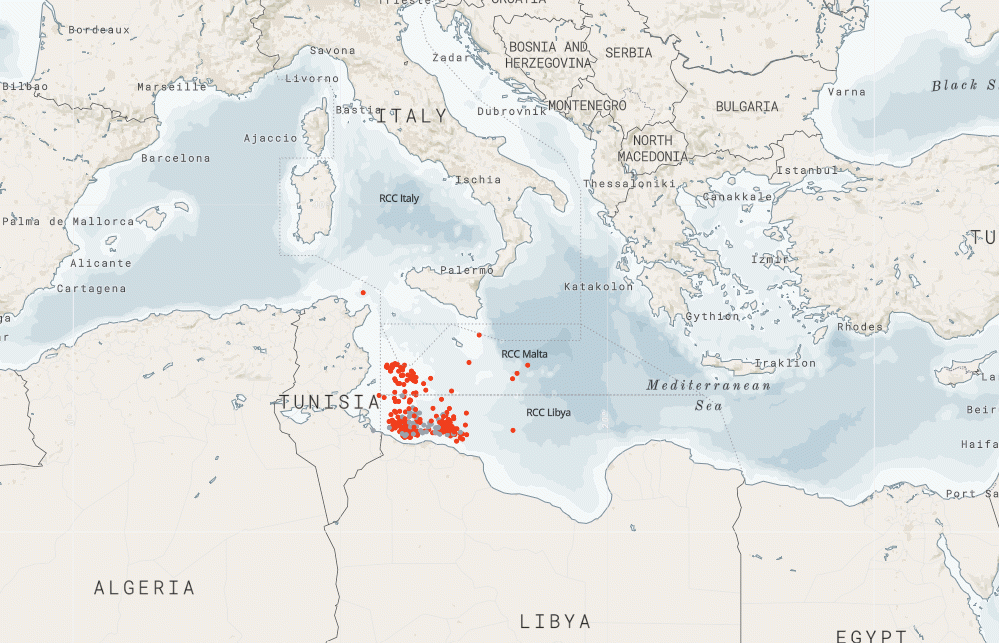Areas of operation
The Ocean Viking operates along the world’s deadliest maritime migration route, in the central Mediterranean, navigating through International waters that span from North Africa—primarily Libya, but also Tunisia and Algeria—to Italy.
Maritime conventions divide the sea into distinct zones with differing legal jurisdictions. Within approximately 12 Nautical Miles (approximately 22 kilometers) from the coast lies the territorial waters of the Coastal State, over which it exercises absolute sovereignty. The Ocean Viking never enters Libyan territorial waters.
Beyond the span of 12 Nautical Miles lie International waters, where any vessel can navigate freely. The Ocean Viking conducts patrols approximately 50 kilometers off the Libyan coast, where the majority of boats in distress are reported.
SOS MEDITERRANEE Rescue Operations

Search and Rescue (SAR) zones
The Libyan coastguard is not fulfilling its responsibility to coordinate rescue operations under maritime law:
1. They do not pass on calls from boats in distress to nearby vessels likely to be able to offer their assistance;
2. They almost never respond to requests from NGO vessels;
3. They are unable to designate a safe port in which to disembark survivors, since Libya cannot be considered a place of safety under maritime law.
Consequently, since 2018, SOS MEDITERRANEE teams have received minimal support from the relevant maritime authorities in their rescue mission. Instead, the various NGOs present in the area work together to locate and rescue boats in distress.
Transparency of operations
All instructions from the ship and those received by the relevant maritime authorities, as well as their non-responses, are transcribed as quickly as possible in the online logbook. All information relating to an operation is also recorded, from the receipt of the alert to the disembarkation of the survivors.
Rescue stages
As soon as a boat in distress is located or reported, a race against time takes place at sea.
Two or three lifeboats approach the boat in distress. The first priority is to calm the occupants, to avoid panic which could cause the boat to capsize. A multilingual cultural mediator reassures them and then gives them instructions. Life jackets are distributed, and the most vulnerable individuals (people in medical emergency situations, then women and children) are transferred to the ship in lifeboats. This is followed by a series of shuttles to bring all survivors safely back on board. In some cases, the rescue ends with the transfer of the bodies of those who died during the crossing. The inflatable boats are then destroyed to prevent them from being used again.
Depending on conditions, each operation can take from one to seven hours.
